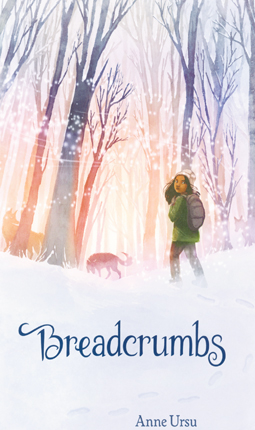Full Text Reviews: Bulletin for the Center... - 10/01/2011 No matter where she goes, Hazel doesn’t quite fit in. She’s too imaginative, too distractible, a bit too in touch with all the hidden magic of the world—and not nearly concerned enough with her fifth-grade peers’ budding interest in popularity and dating. The fact that she was adopted from India as a baby isn’t a huge issue in her life or her relationship with her parents, but her growing awareness that “everyone else came in matching sets of one kind or another” contributes to her alienation and also subtly underlines her classmates’ sense of her difference. Fortunately, she has her best friend and next-door neighbor Jack, her partner in imagination and whimsy, who has been there for her all her life. Just as he’s seen her through her parents’ divorce and her father’s recent departure, she’s supported him through his mother’s worsening depression. At school, however, Jack is now torn between Hazel and his other friends, and after he gets a sliver of glass stuck in his eye one winter day, he rejects her, then disappears altogether. Here’s where the plot gets twisty: he’s lured into the forest by the Snow Queen, and Hazel, deciphering this, embarks on a quest to retrieve him that leads her through the many perils the magical forest has to offer. The world she enters, a sort of crossroads where numerous fairy-tale events and characters intersect and that exists outside of geography, is exactly the kind of twilight realm readers will love to imagine lurking just past the everyday boundaries of forest and river and horizon that they see every day but rarely cross. Ursu expertly weaves shivery magic throughout the mundane winter landscape of the book’s opening, so that the fairy-tale departure feels utterly possible. At the same time, she infuses the folkloric flourishes with urgent emotion, giving each dangerous magical lure modern resonance (and, quite often, delicious creepiness to boot). Occasional black-and-white full-page illustrations, artfully smudgy, heighten the atmospheric touches, providing a visual sense of the forest’s vastness and the blanketing snow’s eerie coziness. The folk and fairy tales featured (many of them lesser-known stories) play on the themes of parental longing, lost and lonely children, changing identities, and escape from the world’s cruelties; all of their iterations rework conceptions of villains, heroes, and victims with thoughtful complexity, so that characters all subvert expectations in some way. With every encounter, Hazel learns new things about herself and her world, escaping perils that go far beyond mere physical danger. Richly referential, Breadcrumbs acknowledges its close kinship not just to the fairy tales it re-envisions but to a whole tapestry of classic and modern children’s fantasy, from C. S. Lewis and Madeleine L’Engle to Philip Pullman and Neil Gaiman, with well-chosen details of name, place, and character that will delight those in the know without alienating the uninitiated; it’s also akin to Rebecca Stead’s When You Reach Me (BCCB 9/09) in the way it delves into the confusing no-man’s-land between childhood and adolescence and all the pain of the transition through it. Hazel emerges from the ordeal stronger and more willing to engage with the real world, a result that cements the links between reality and fantasy that Ursu so richly explores. The evocative magical landscape, superbly developed characters (particularly dreamy, self-doubting, determined Hazel and lost Jack), and the piercing sadness of a faltering childhood friendship give this delicately written fantasy wide and lingering appeal. (See p. 114 for publication information.) Claire Gross, Reviewer - Copyright 2011 The Board of Trustees of the University of Illinois. School Library Journal - 11/01/2011 Gr 5–8—Hazel Anderson's 10-year-old world is teetering on the unsteady foundation of her parents' separation, as she is now at a new school where she feels like an outsider, both as a dreamer and as an adoptee from South Asia. She is bullied and misunderstood, and her best friend, Jack, is spending more time with his male friends than with her. When a demon drops a shard of an enchanted mirror into his eye and he becomes drugged and manic under its influence, he accompanies the Snow Queen into the woods. During her search for him, Hazel's realistic world collides with surreal fantasy and she is thrown into the eerie, threatening woods of broken and transformed fairy tales. She encounters shadowy threats in the form of creepy, unscrupulous adults who have their own agendas and victims: a girl ensnared in the body of a bird, and children trapped as flowers. Hazel's challenge consists largely in persisting in her quest to rescue Jack despite her insecurity about their friendship and the lack of a breadcrumb path in a confusing world. Unlike the triumphant ending of Andersen's "Snow Queen," Hazel's rescue of Jack and its aftermath is realistically bittersweet. Jack is who he is, a boy who is growing away from her. It is Hazel who is changed by her experience, and who learns to approach her life with positive energy. Although this is a fantasy, its grounding in psychological realism and focus on Hazel's feelings makes it a fine choice for readers who prefer realistic fiction. Ursu's multilayered, dreamlike story stands out from the fantasy/quest pack.—Sue Giffard, Ethical Culture Fieldston School, New York City - Copyright 2011 Publishers Weekly, Library Journal and/or School Library Journal used with permission. Loading...
|



